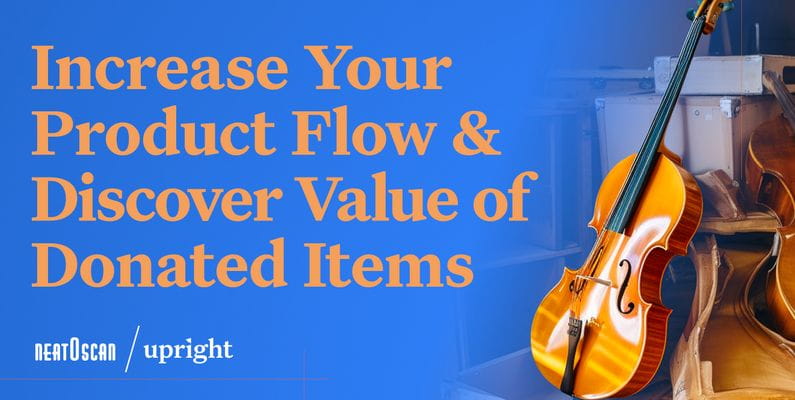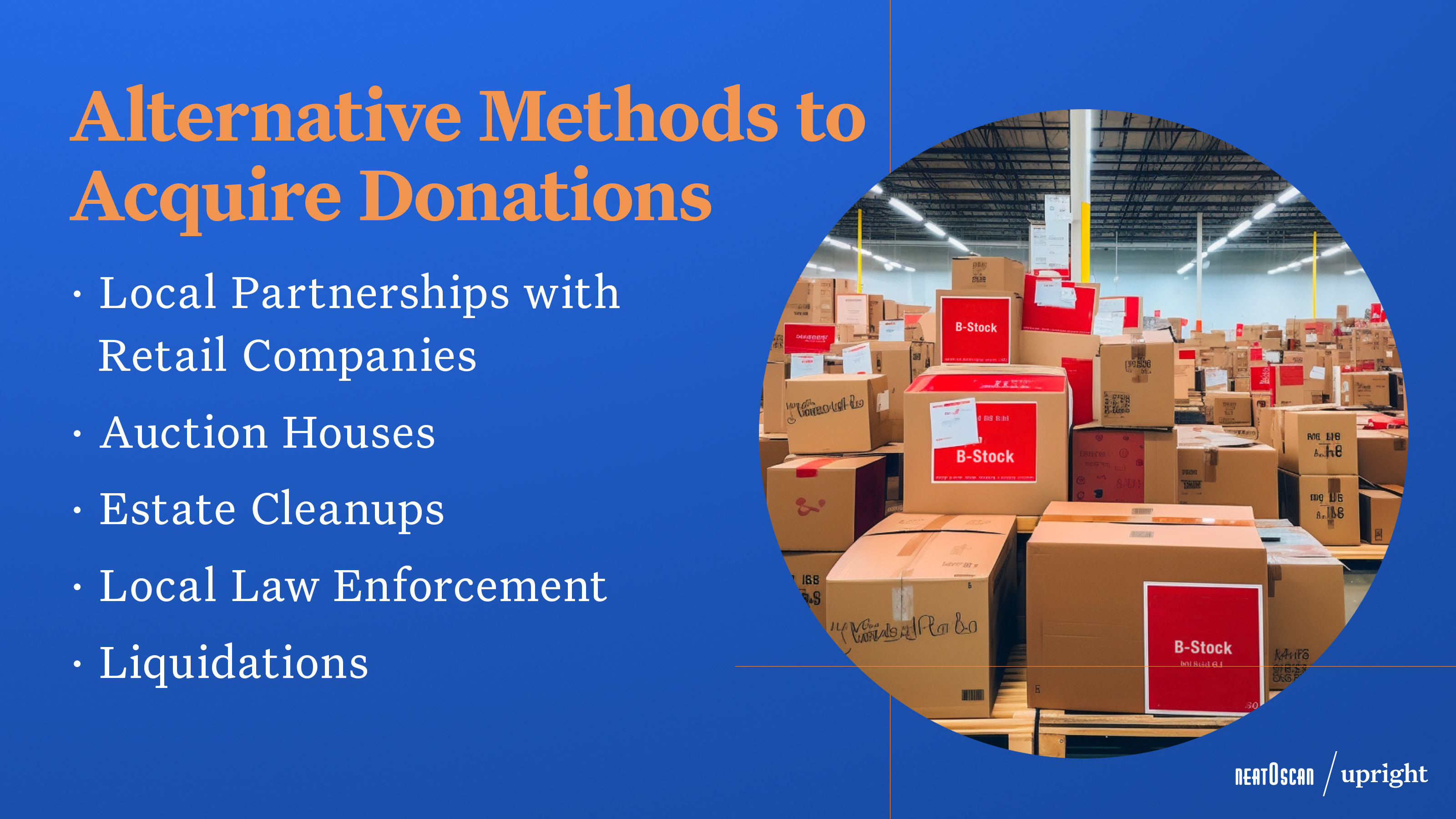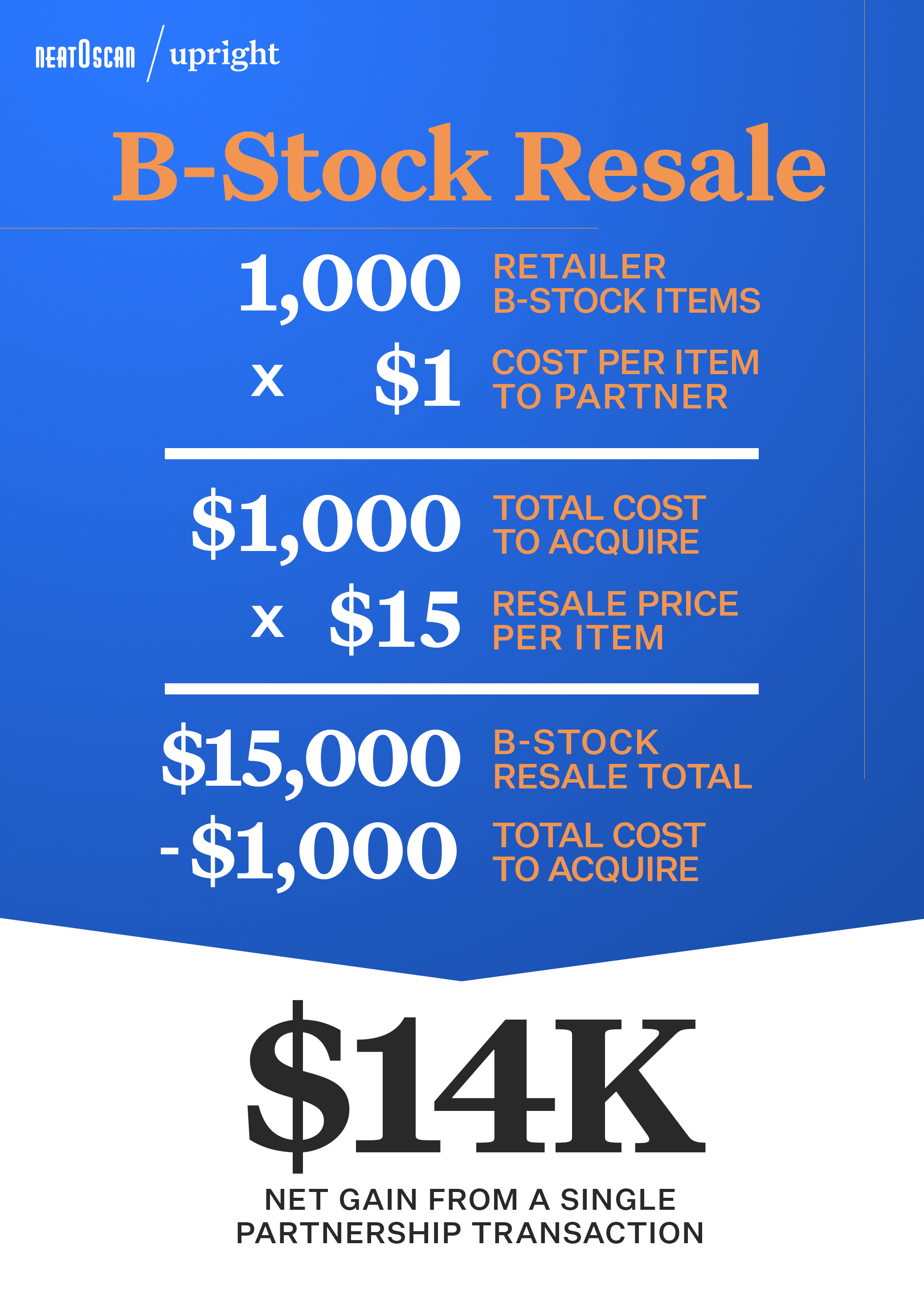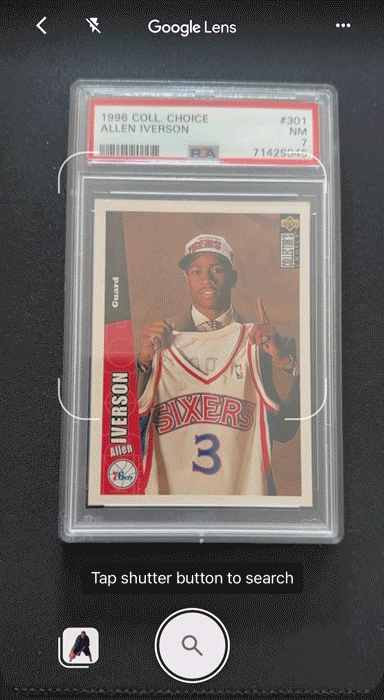Increase Your Product Flow & Discover Value of Donated Items

Running an efficient secondhand retail e-commerce business can be challenging.
Secondhand operations are facing high staff turnover and the need for specialized training. Both can result in missing out on valuable items to sell on your e-commerce marketplaces.
This article will address 2 major pain points in our industry and provide solutions. Organizations running low on valuable items will learn how to increase product flow. Second, organizations with high turnover will be able to identify valuable donated items.
After reading this article, you’ll gain insights into:
- Advanced product sourcing techniques
- Mastering item valuation
- Essential apps for pricing donated goods
- Effective training methods for teams with high turnover
Watch Our Master Class on This Topic
How to Increase Product Flow
The surging reseller community is challenging donation-based organizations in securing high-value products. It’s natural that many organizations are looking for alternative donation acquisition methods.
Here are some methods our clients have found successful:
- Building local partnerships with retail companies
- Auction Houses
- Estate Cleanups
- Local Law Enforcement
- Liquidations

Let’s explore how your organization can get started with these methods.
How to Build Partnerships with Local Companies to Receive More Product
Building local partnerships is often the most lucrative way to increase product flow.
Larger retail companies regularly part ways with b-stock or unsold inventory. These items can sell quickly at a high margin with a quick sellthrough rate. In one instance, our services team supported a client in attainting 1,000 items from a popular brand for $1,000. Each item they purchased for $1 sold online for $15 or more. Netting over $14,000 in profit from a single partnership transaction.

To get started, we recommend prospecting larger retailers on LinkedIn. First, identify the retail stores or headquarters in your region. For example, Minneapolis, MN locals would be wise to reach out to Target. Vancouver, BC locals would benefit from a relationship with LuLulemon’s headquarters.
Next, find the right people to talk to. Search for employees with titles like "Operational Lead". This role oversees daily retail operations and coordinates inventory strategies. From here, begin to develop a relationship with them via LinkedIn InMail or through email.
A few outreach techniques that we’ve found useful are to:
- Consider a voice note or video to standout
- Personalize your message and find your commonalities
- Get your executive buy- in and have them reach out to folks on behalf of your organization

Other Methods to Increase Product Flow
Secondhand retailers can grow by partnering with police, estate services, and auction houses. These can be great resources to increase your product flow.
Start by building a list of the following types of businesses or organizations in your area:
- Law enforcement stations or other places that receive lost goods
- Auction houses
- Estate cleanups or removal services
- Liquidation companies
After building a list of these organizations or businesses, reach out to them by phone or email. Find out if there is an outlet for you to support them with your operation. Many sellable items may otherwise be likely sent to salvage.
How to Identify High Value Products
Your organization may have plenty of items in stock. Yet, your team may have difficulty sorting out what’s valuable.
If this is the case, it’s a two-pronged problem:
- Knowing the value of donated goods
- Training staff to understand the value of donated goods
There is a solution. You can use software to identify valuable donations and use it to train your staff to spot them.
First, if you receive an item and you have no idea where to start, Google Lens is a great resource.
Google Lens is incredibly useful in identifying unknown products. This tool is helpful in scouring the web for similar items for understanding what an item could be.

Unfortunately, the app isn’t always reliable in determining exact values. So, the results can vary.
Apps that tell you how much an item is worth
After identifying your item's brand and/or material, there are many software options to determine its value and price point. We recommend leveraging data found through the world's largest secondhand e-commerce marketplace, eBay.
eBay has been around for many years with a wide range of categories that you can utilize to your advantage.
- For eBay sellers only
- High demand category identification
- Based on sales data
- Free for anyone to use
- Ideal for trading card valuation
- Free for anyone to use
- Pulls eBay sales data to showcase average sale prices
- Free for anyone to use
- Pulls eBay sales and current listing data
These are best used when developing training tools and guides for your team or for one-off items that you need to research. We don’t recommend using these tools in your day-to-day operational flow as they could hamper your workflow.
Some organizations receive a high volume of art and collectibles. If this is the case, they may prefer to outsource their item valuation process. Here are some paid tools to get expert help for specialty items.
- 7 day free trial
- For art and collectibles only
- Niche information for high value items
- An expert values your items for you
- $30 per item valued
- 1-2 days to value an item
How to Train Staff in Item Valuation
If you've made the effort to learn about your products' value, then share it. Your organization will benefit exponentially if you share your knowledge with the team.
This happens to be a common flaw and challenge for secondhand operations. Certain organizations have trouble providing extensive product training in high turnover environments. So, high value items are often overlooked or missed by staff.
To ensure you never miss a high value item again, consider:
- Brand guides
- Visual displays
- Feedback loops
- Banners
Make sure your team shares and trains others on this acquired knowledge. Items that sell well online should be displayed on banners, guides, and TV screens.
Present this information in various formats to enhance your team's comprehension.
ACCESS THE TOP BRANDS IN E-COMMERCE
Making the Most of Your Donated Items
Each day more resellers are flipping thrift store finds. This makes it crucial to diversify and know which products will draw in online buyers. Increase your product flow and know your products' value. This will be your organization's competitive edge.
You’re now equipped with how to value your items and expand your team's expertise. Ready for more?
Download our Top E-commerce Brands Guide to further enhance your strategy!
